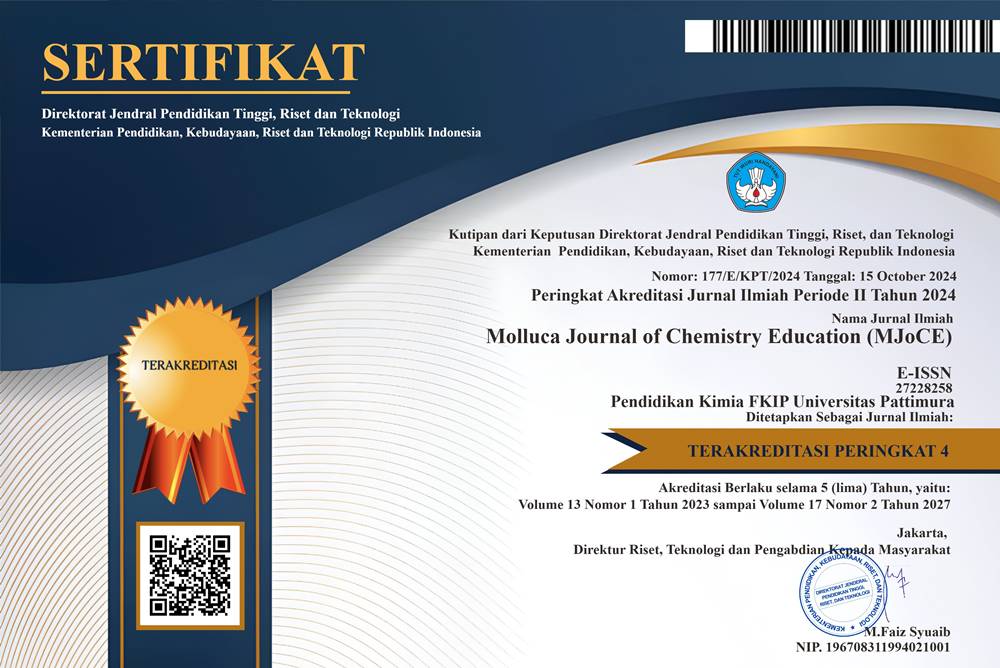ANALISIS KANDUNGAN ASAM LEMAK OMEGA-3 EPA DAN DHA HEWAN LAUT TELUR BULUBABI (DIADEMA SETOSUM) DI DAERAH SULAWESI TENGGARA
Abstract
A research to determine fatty acid content of omega-3 EPA (Eicosapentaenoic Acid) and DHA (Docosahexaenoic) in long and short sharp point sea urchin eggs and to investigate the effect of heating time and adition of BHA (Buthylated Hidroxyanisol) antioxidant on degradation levels of EPA and DHA in sea urchin eggs has been done. Sea urchins (echinus sp) are one type of animal living in superficial waters also called sea brandals (rascals) and many of them live in Southeast Celebes, Moluccas, Indonesian New Guinea and some other regions of Indonesia. The sample of sea urchin eggs was taken from Southeast Celebes. Extraction of fatty acid omega-3 EPA and DHA was carried out by Folch extraction method, namely, by using a mixture ratio of 2:1 and 1:1 chloroform-methanol. The fatty acids of sea urchin egg obtained from the extraction were transestherified in methanol using BF3 as catalyst before injected into gas chromatography to determine fatty acid content. The results of the study showed that the fresh short point sea urchin eggs contained 7.34% omega-3 EPA and 1.11% DHA if the extraction was carried out by chloroform-methanol 2:1, while by using chloroformmethanol 1:1, the fatty acid content of EPA and DHA was 7.20% and 1.01%, respectively. For the fresh long point sea urchin eggs using chloroform-methanol solvent 2:1 contained 10.29% EPA and 0.81% DHA, while by using ratio 1:1 resulted in 10.07% EPA and 0.72% DHA. The EPA and DHA degradation levels of sea urchin eggs due to the variation of heating time of 20, 30, 40, 50 and 60 minutes were 5.86%, 8.09%, 9.40%, 10,49%, 11.17%, respectively for EPA and 11.71%, 81.08%, 83.08%, 90.00% and 98.78% respectively for DHA; while for long point sea urchin eggs the degradation levels of EPA were 9.43%, 8.25%, 3.11%, 2.71%, 0.31% and of DHA were 0.21%, 0.19%, 0.11%, 0.08% and 0.02%, respectively. Addition of BHA antioxidant at heating time of 30 minutes was able to prevent the degradation levels of EPA and DHA with optimum concentration of addition between 25–50 ppm
Downloads
Copyright (c) 2011 Molluca Journal of Chemistry Education (MJoCE)

This work is licensed under a Creative Commons Attribution-NonCommercial-ShareAlike 4.0 International License.





